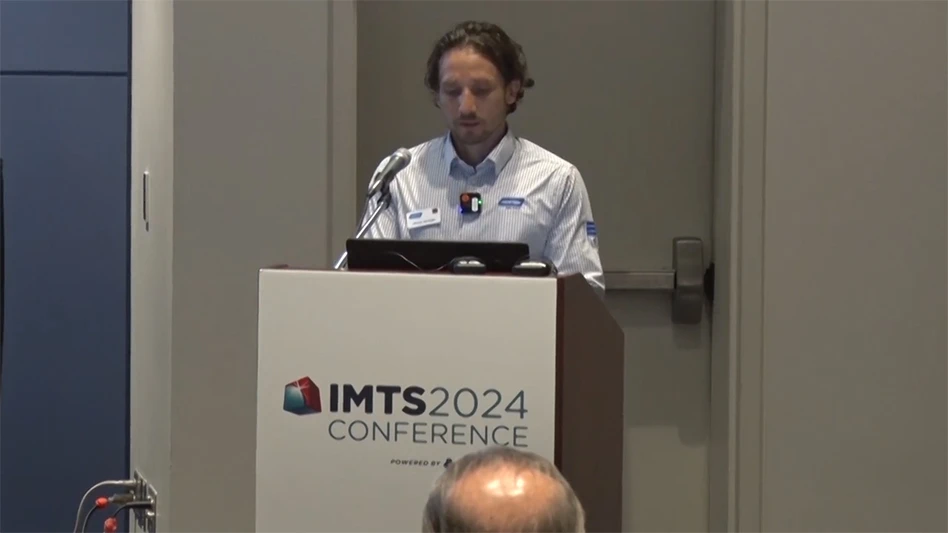
Automotive manufacturers and designers are always searching for one thing – space. More space for passengers and more space for the latest technology. Engineers at BioSolar have found a way to provide some of this with their compact Super Battery.
Inspired by nature, BioSolar is developing a cathode based on inexpensive conductive polymers and organic materials that can take full advantage of the storage capacity of conventional anodes. By integrating this high-capacity, high-power and low-cost cathode with conventional anodes, battery manufacturers can create a super lithium-ion battery that could double the range of a Tesla electric car.
To explore this cathode technology, Today’s Motor Vehicles sat down with David Lee, president and CEO of BioSolar.
Today’s Motor Vehicles: What design freedoms do higher-density electric energy storage systems create for manufacturers?
David Lee: Higher energy density electric storage systems occupy less space in vehicles or material handling equipment (MHE) while providing equal energy storage capacity. The smaller footprint therefore provides increased freedom to designers of vehicles or equipment in space efficiency, user friendliness, and the ability to use identical platforms for multiple grades of performance applications.
Furthermore, high-energy density electric storage systems also enable long-range capabilities for vehicles or higher performance equipment without requiring structural changes in existing infrastructure.
TMV: What are the manufacturing challenges and opportunities for automakers creating lithium-ion battery packs?
DL: High-density lithium-ion batteries that possess a smaller footprint allow manufacturers more design freedom and/or longer range capabilities without increasing the size and weight.
Also, lithium-ion batteries do not have to be fully discharged before recharging to avoid losing capacity. This memory-less nature makes lithium-ion batteries more suitable for use in hybrid vehicles that require constant charges and discharges of batteries in stop-and-go traffic.

Lastly, lithium-ion batteries possess a low self-discharge property that allows vehicles to be parked for longer periods of time without losing stored electrical energy. Who wants to return to a dead car battery after a long vacation?
[As to] challenges, the energy storage capacity of a lithium-ion battery will slowly diminish over time, even it is not in use. Most existing lithium-ion batteries lose approximately 20% of their storage capacity after 1,000 charge-discharge cycles. Therefore, lithium-ion batteries installed in electric vehicles will have to be replaced every four-to-six years.
High costs are yet another challenge for manufacturers. Currently, the cost of storing electrical energy using lithium-ion batteries is above $500/kWh. According to recent data, this cost is expected to decrease by more than 50%, to $230/kWh in the next five-to-seven years. However, electric vehicles will gain a competitive edge in relation to conventional vehicles only when the cost is at or below $100/kWh.
A substantial portion of the cost of manufacturing a lithium-ion battery is in the production of its cathode. So, the cost of cathode manufacturing needs to be reduced in order to effectively lower the cost of manufacturing lithium-ion batteries.
Currently, cathodes are formed onto metal substrate by spraying electrode material in a slurry form which requires continued mixing for even distribution. To achieve the desired cathode thickness, materials are sprayed and then dried to a specific temperature and viscosity before heavy calendaring. To avoid cracking, a winding of the electrode sheet has to occur before the cathode is completely dry.
TMV: What commercial and industrial vehicle applications are enabled?
DL: Lithium-ion batteries are suitable for applications that require high energy storage capacity but not rapid charging and discharging. Therefore, electric vehicles are an ideal application.
Supercapacitors are better suited for applications that require rapid charging and discharging rather than high energy storage for prolonged operation. Therefore, a supercapacitor is a better option for hybrid electric backhoes that require high power to handle frequent heavy lifting.
A combination of lithium-ion battery and supercapacitors can be used for hybrid electric vehicles. The high frequency of charging and discharging can be handled by supercapacitors, while the high energy storage capacity of lithium-ion batteries provide long range and longevity of the storage system.
TMV: What can be done to lower the cost and make battery and hybrid vehicles more affordable?
DL: To make battery and hybrid vehicles more affordable in the next several years, a few factors in the make-up of lithium-ion battery technology require change.
First, the cost of storing electrical energy using lithium-ion batteries has to be reduced below $100/kWh. To do so, designers and manufacturers must explore a different lithium-ion battery chemistry and the use of new materials and low-cost manufacturing methods that can work well with this new chemistry.
Second, the life cycle of a lithium-ion battery needs to be extended. Currently, owners of electric vehicles have to purchase replacement battery packs multiple times throughout the lifetime of their electric vehicles. Therefore, electric vehicles would make more economic sense if the battery’s life cycle paralleled vehicle ownership.
One must explore a new lithium-ion battery chemistry rather than continuing to focus on just improving conventional intercalation chemistry that promises only incremental improvements.
At BioSolar, an initial validation testing has been completed on a novel cathode material that could lower the manufacturing costs and lengthen the lifetime of lithium-ion batteries. The new cathode material represents a departure from the traditional lithium-ion intercalation chemistry used in current batteries, in favor of a reduction-oxidation (redox) chemistry that offers several advantages.

BioSolar’s cathode uses a proprietary combination of commercially available polymers and other raw materials to make up the redox-supporting cathode structure. The polymer blend is then coated onto an aluminum substrate using a simple proprietary process.
Manufacturing of BioSolar’s cathodes does not require expensive and energy-intensive slurrying and calendaring processes required to manufacture current cathodes for lithium-ion batteries. The new cathode material has the potential to lower the energy storage costs for lithium-ion batteries to below $100/kWh, and the material can be made using existing battery-manufacturing infrastructure.
TMV: For BioSolar’s cathode technology, what has to be proven, or what steps have to be taken for this to be available to consumers?
DL: We have developed super cathode technology that is intended to increase the capacity, lower the cost of energy storage, and improve the cycle life of the existing lithium-ion batteries.
At the University of California, Santa Barbara (UCSB) laboratory, we conducted validation testing of our cathode material, and we were able to quantitatively obtain the material’s properties that directly translate into our targeted performance goals. If implemented properly, the use of this cathode material in lithium-ion battery technology can result in a 50% increase in energy storage capacity, reduce the energy storage cost to below $100/kWh, and significantly extend the lifetime of a lithium-ion battery.

Once optimized for performance, stability, and cycle life within desired battery system specifications, the next step is to build and test a set of simple prototype lithium-ion batteries incorporating our cathode materials. When this is completed, we can develop more comprehensive prototypes and testing protocols. To make this technology commercially available, we will seek to license our super cathode technology to battery manufacturers or start a joint venture to produce the battery.
BioSolar Inc.
About the author: Arielle Campanalie is an associate editor of TMV and she can be reached at acampanalie@gie.net or 216.393.0240.
Latest from EV Design & Manufacturing
- ArcelorMittal announces plans for electrical steel manufacturing facility in Alabama
- APEX web tool helps users to optimize machine performance
- Partnership to develop dry battery electrode coating expands
- GROB Systems to demonstrate power skiving technology at PMTS 2025
- Startup develops sustainable, nontoxic alternatives to battery manufacturing chemicals
- Learn what you need to comply with CMMC requirements
- Envisioning electric vehicle charging in motion
- There’s still time to register for this week’s manufacturing industry webinar!





